When steamers sailed from the Pier to France
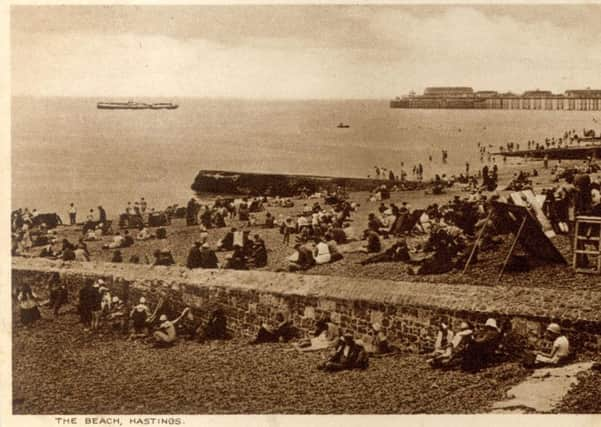

He writes. The original concept of a pier was to provide a landing place for boats and we know that Hastings’ fortunes in this area had not been good with various attempts at building piers and harbours not meeting with success.
Even the 1896 harbour, the remains of which are still with us, met with insurmountable difficulties and was never finished.
Advertisement
Hide AdAdvertisement
Hide AdArriving at Hastings by boat, and in the days before the railway this was often an option, the only way ashore was often in a ‘ferry boat’ with the undignified spectacle of being physically carried through the surf by a burly ‘ferryman’; and guide books from 150 years ago detail maximum tariffs that could be charged by these ‘ferrymen’.
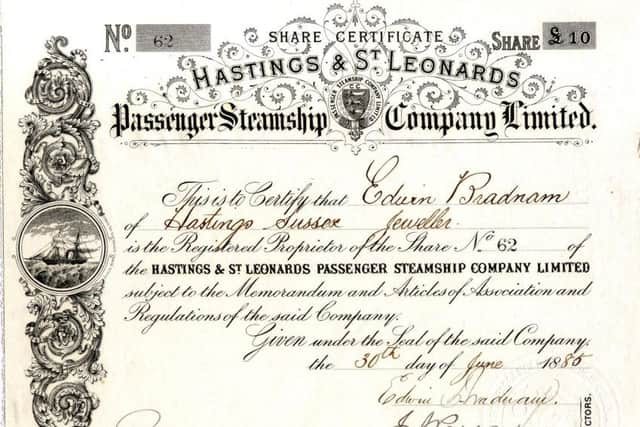

Heavy freight such as coal was delivered right up to the 1880’s by colliers running ashore at high tide and unloading into carts at low tide, and this didn’t change with the arrival of Hastings Pier.
It’s highly unlikely that Hastings Pier was built simply as a landing stage because in the early day the landing facilities were somewhat restricted only existing on the eastern side of the pavilion but it was certainly a bonus and resulted, in 1890, with the staging being extended south and round the pier head – (the western side of the pier being considered too exposed) with space for four steamers to berth at the same time.
In its heyday before the first war, trippers from Hastings Pier could be taken to Ramsgate or the Isle of Wight with all the intermediate stops or cross the Channel to Boulogne, Calais or Treport and even onward travel to a day trip in Paris, but, because there was no customs facility at Hastings only hand baggage was permitted for those landing in France. Trips to the Sovereign lightship were very popular too.
Advertisement
Hide AdAdvertisement
Hide AdAll illustrations throughout this series are from Ion Castro’s own collection and he can make available copies of many of the historic images used in this series. There’s more local history on Ion’s website, www.historichastings.co.uk
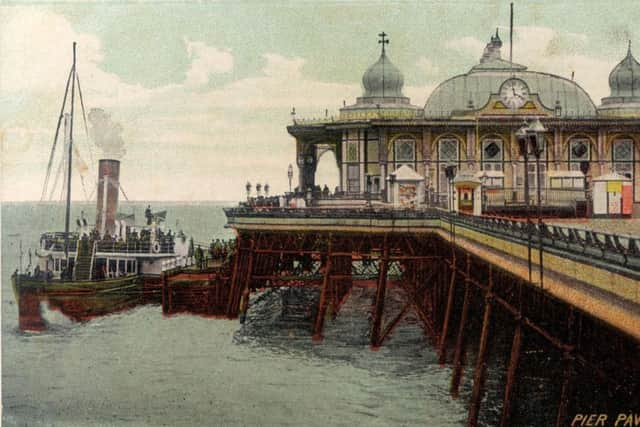

Captions
34 Hastings - The Pier Pavilion.
Produced by the French international postcard company Levy Fils et Cie and not, as we now know, Louis Levy. On the left “The London Postcard Co” sells its wares and at the top of the stairs leading down trips on the ’Cynthia’ are on offer, to Eastbourne, Brighton, Folkestone, Dover and Boulogne and on the right is the booking office for the Halcyon that we know only operated during the 1905 season and gives us a date for the postcard.
644 Hastings From the Castle.
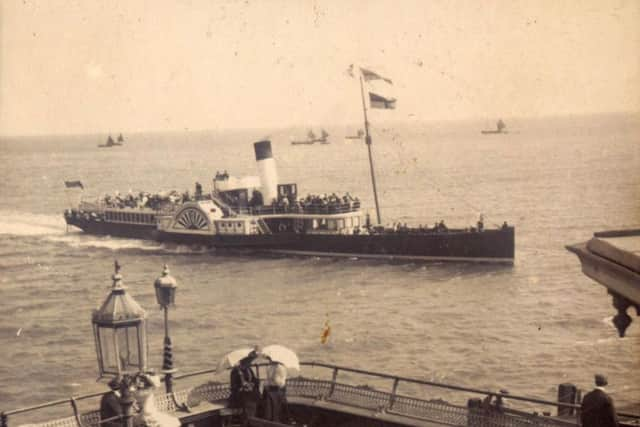

“Victoria” Series, posted 1914. Ship appears to be PS Alexandra which operated 1895 – 1904. Notice the pleasure yachts drawn up at Harold Place and St Leonards Pier exactly a mile to the west of Hastings Pier. The promenade is yet to be widened.
Pier Pavilion, Hastings.
This uncredited hand-coloured postcard dates from around 1905, and the paddle steamer is probably the’Cynthia’
The Beach, Hastings.
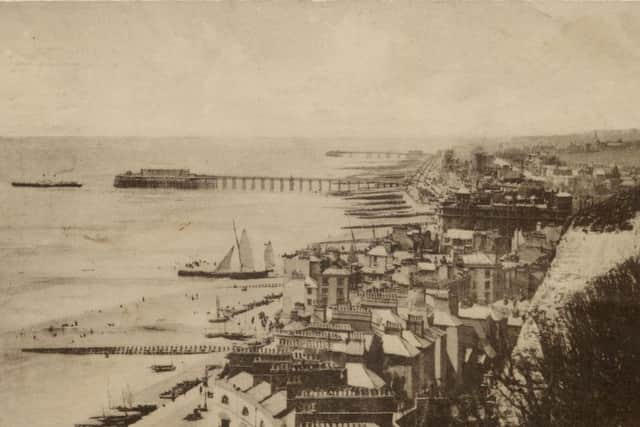

Advertisement
Hide AdAdvertisement
Hide AdThis photogravure image dates from the 1920’s with a steamer, possibly the original Waverley (1899 – 1940) heading to the pier.
218 Hastings. Excursion Steamer.
From the Universal Stereoscopic View Co. and features P.S. Seagull, built in 1877 it operated in Hastings between 1891 and 1895. She was licenced to carry 182 passengers, it had started her life as a paddle-tug on the River Tyne until purchased by the Hastings & St Leonards on sea and Eastbourne Steamboat Company in 1891 and registered in Rye in the name of F J Parsons, proprietor of the Hastings Observer.
Pier Head.
Half of a stereo pair and the paddle steamer is the P.S.Glen Rosa, built in 1877 and chartered by the Hastings & St Leonards Passenger Steamship Company for the 1892 season and licenced to carry a maximum of 495 passengers. The landing stage would be below this level
128 General View Hastings from Pier Head.
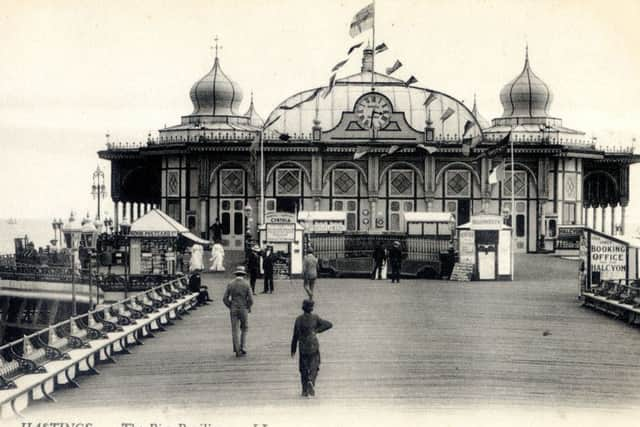

A well-known hand-tinted pre war postcard image with Robertson Terrace in the background. The vessel is probably the P.S. Brighton Queen, part of the P&A Campbell fleet that included the original Waverley and the twin-funnel Glen Gower and operated in Hastings until the outbreak of war in 1939.
Shipshare.
Advertisement
Hide AdAdvertisement
Hide AdThe Pier landing stage encouraged the formation of a local company, the Hastings & St Leonards Passenger Steamship Company which was established in 1885 with prominent local worthies on the board, - note the directors’ signatures, Edwin Bradnam, a jeweller and pawnbroker was Mayor in 1884/5 and again in 1890 and F J Parsons we know as the proprietor of the Hastings & St Leonards Observer. The steamship company was to survive several re-incarnations of similarly-sounding legal entities before being finally dissolved in 1911.
Don’t miss out on all the latest breaking news where you live.
Here are four ways you can be sure you’ll be amongst the first to know what’s going on.
1 Make our website your homepage at www.hastingsobserver.co.uk
Advertisement
Hide AdAdvertisement
Hide Ad2 Like our Facebook page at www.facebook.com/hastingsobserver
3 Follow us on Twitter @HastingsObs
4 Register with us by clicking on ‘sign in’ (top right corner). You can then receive our daily newsletter AND add your point of view to stories that you read here.
And do share with your family and friends - so they don’t miss out!
The Hastings Observer - always the first with your local news.
Be part of it.